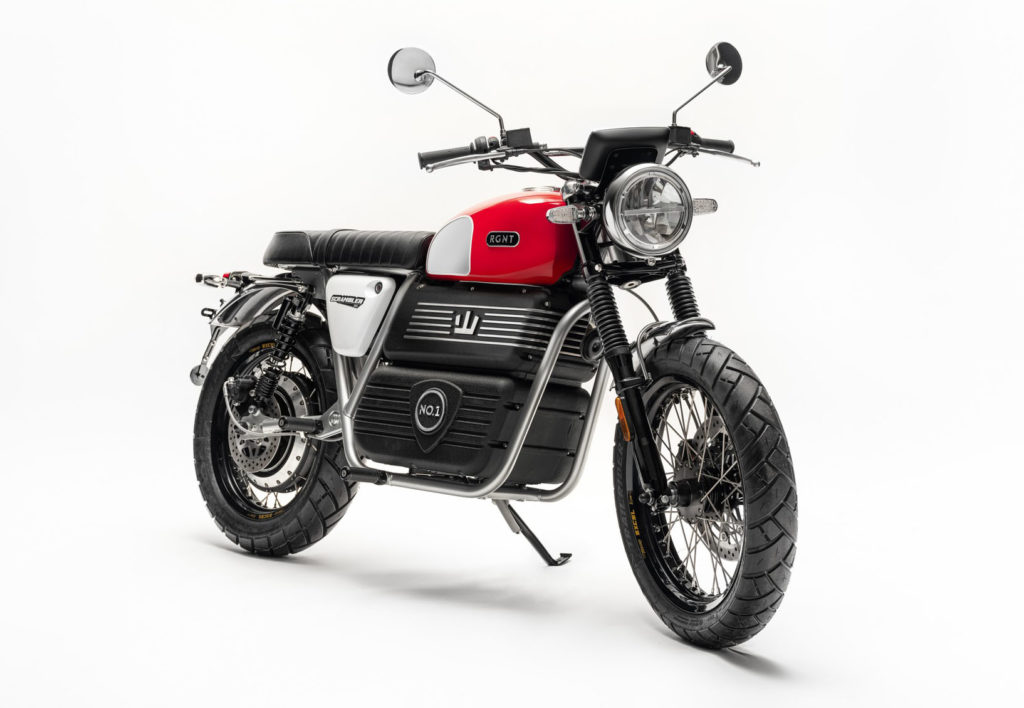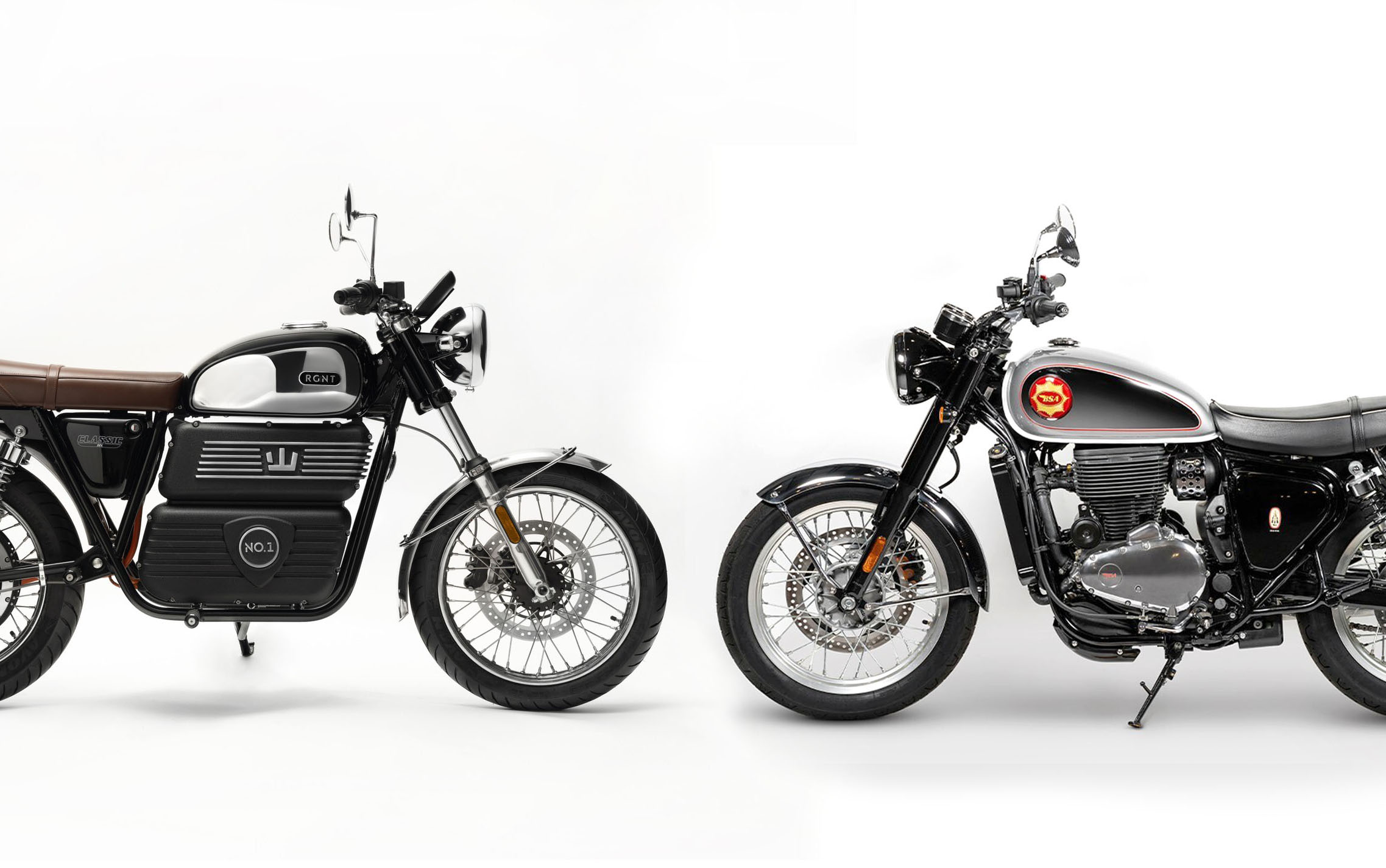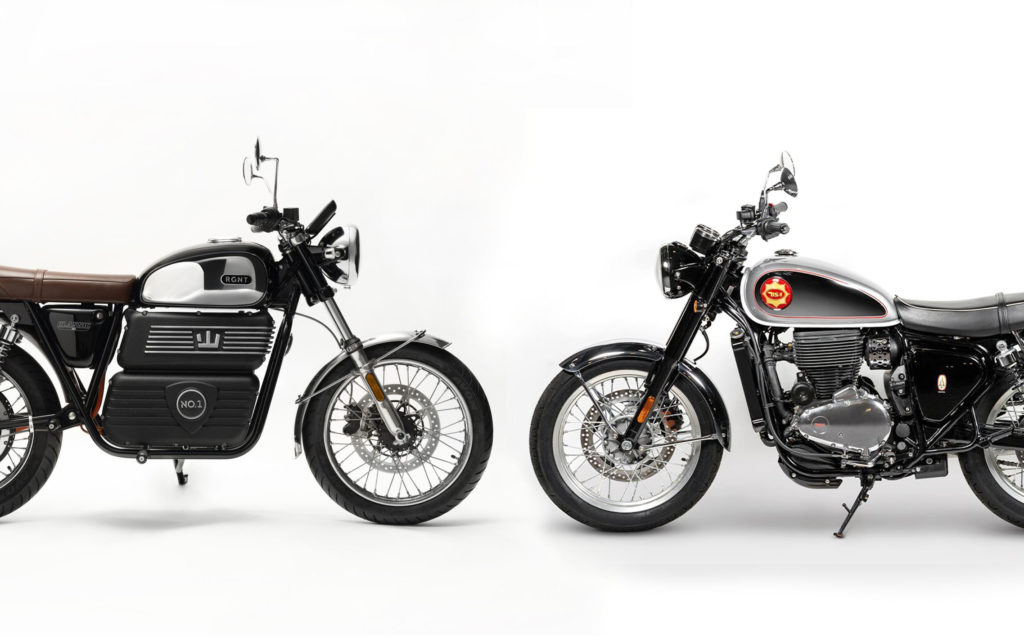
As a biker with a mind for the future in the 1960s, you’d probably have been dreaming in your vivid imagination about bikes that were far more technologically advanced by the year 2022, than what has actually become a reality. In fact, it’s almost a case of back to the future, as retro styling and the parallel twin both play a huge role in the current two-wheeled marketplace. But as it sits today, the real thought for the future is how soon before electric power surpasses the humble internal combustion engine. Now two new motorcycles, the BSA Gold Star and the RGNT Classic allow us to assess Gas vs EV in this modern retro bike shootout.
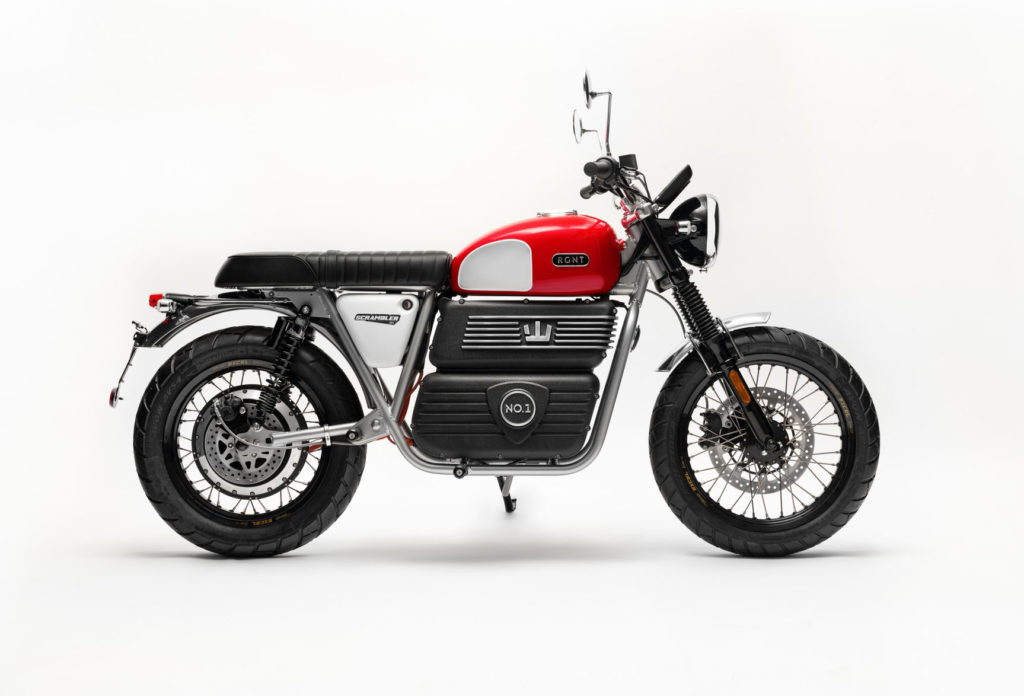
The enormous influx of Indian money into the motorcycle world has helped to save the BSA brand in the same way that it has done for both Royal Enfield and Norton. With BSA now owned by Classic Legends a subsidiary of the manufacturing giant Mahindra, and the BSA bikes are to be assembled in the UK. And what better model to bring back than the Gold Star, an absolute icon of the industry and a machine that dominated a host of motorcycle racing categories. Only the all-new 2022 model will be much more like a modern Enfield, budget-friendly, and not so performance orientated.
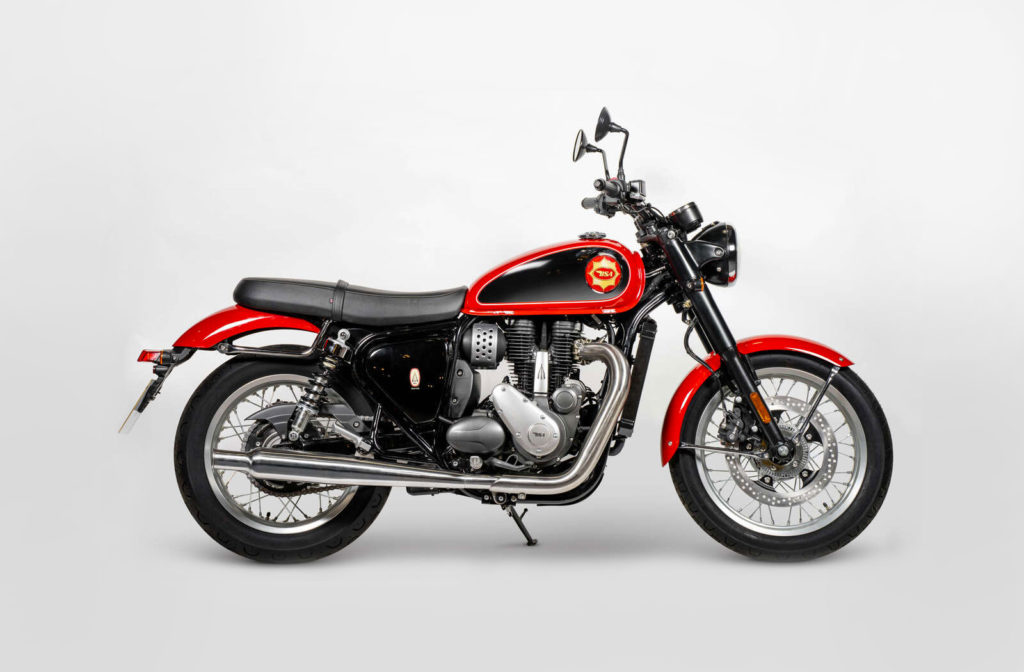
In the other corner, and commencing development at a similar time, is the Swedish outfit RGNT. Founded by Jonathan Åström, the Swedish company doesn’t have the brand recognition to rely on but has a love for the same retro era from which the Gold Star evolved. Jonathan’s desire is to build a technologically advanced machine for the modern rider, that is as green as can be in both production and running, and yet draws not only its styling from days gone by but also the same commitment to a high quality, hand-built product.
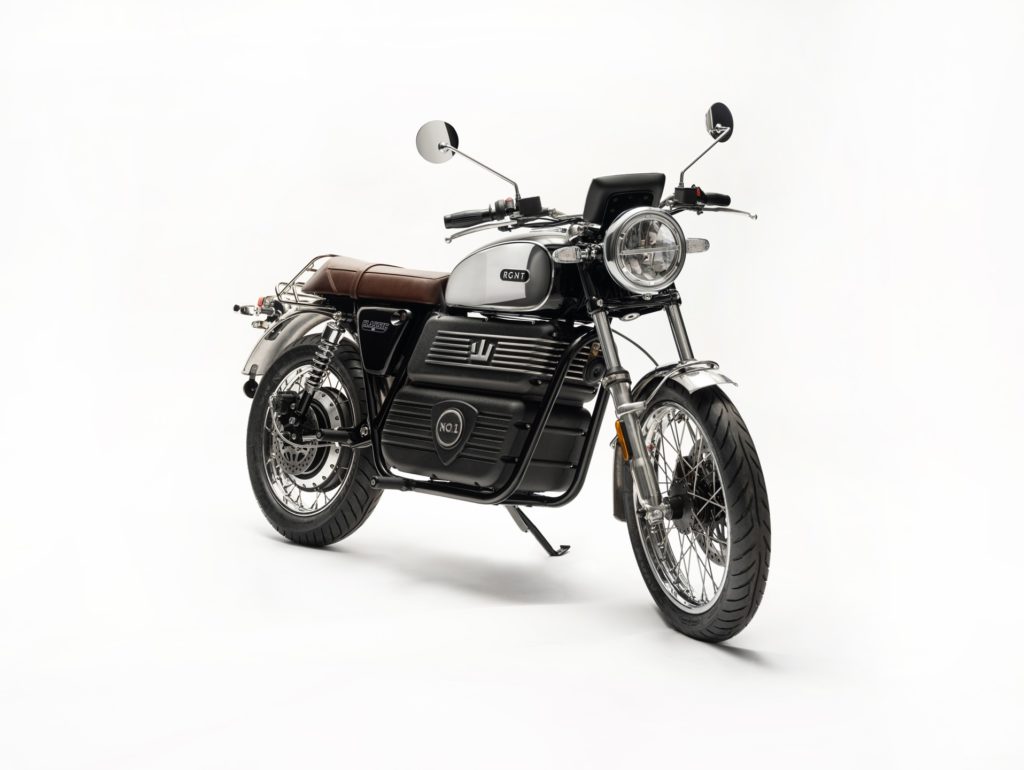
Despite the enormous difference in what powers these two motorcycles, the foundation for them both is more than just skin deep. Each starts life based on a very traditional dual cradle, tubular steel frame. They also have very similar geometry, both utilising traditional front forks, a simple twin shock rear, and a straight from the ’60s, an 18in front and 17in rear wheel combination. It’s hard to know without riding both bikes back to back, but you could expect very similar handling and certainly the same sit-up and beg, comfortable riding style.
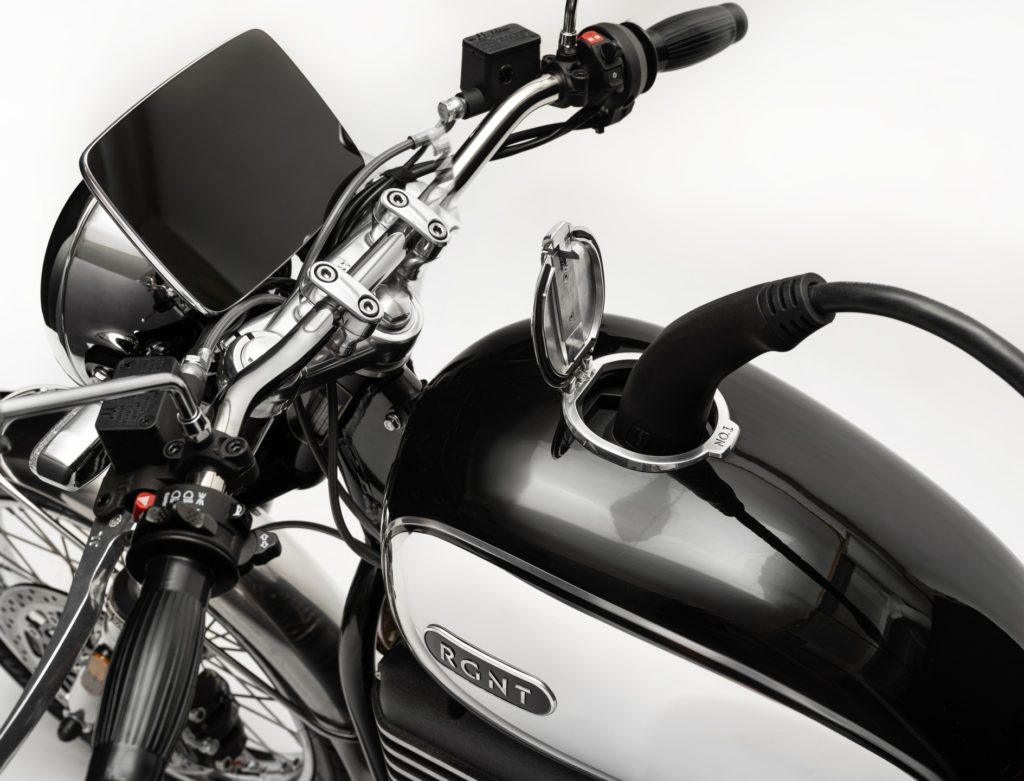
The styling too is very similar, wire wheels, a rounded ‘fuel tank’, and an almost bench-like two-up seat that gives them the ultimate in true retro styling. But, where BSA has gone to incredible lengths to make their petrol-powered engine look very much like that of the Gold Star of old. RGNT is faced with the same problem that all electric motorcycle manufacturers face; how to package the drivetrain in an attractive manner. For now, it’s hard to imagine few bikers preferring the visuals of the RGNT powerplant over the BSA.
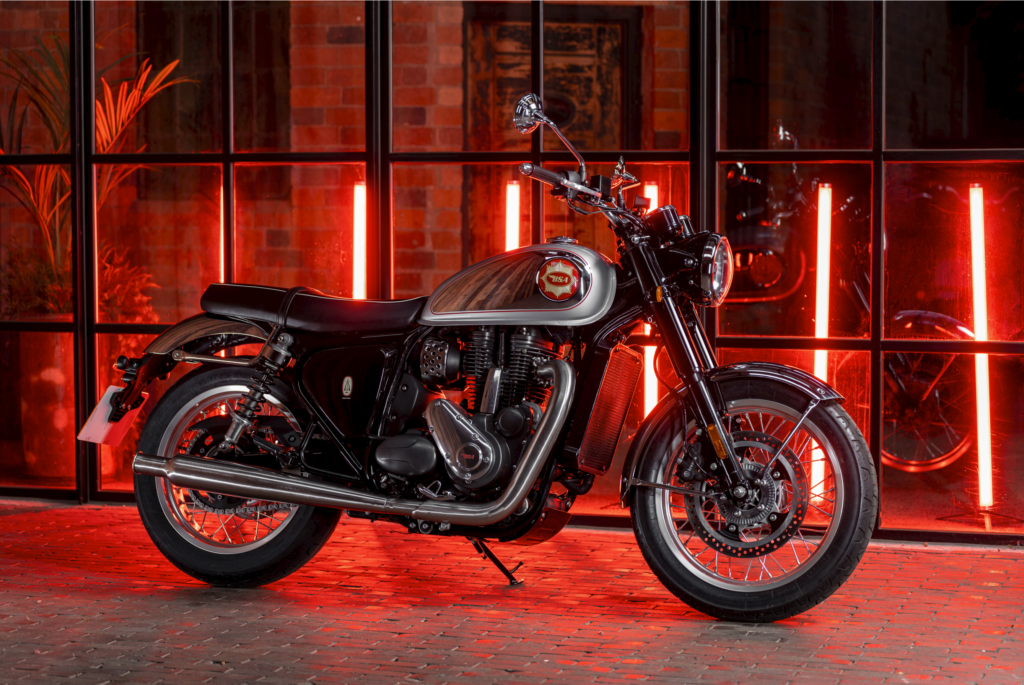
It really comes down to three key areas, weight, performance and price, and there is a surprisingly early win for the electric. With RGNT’s engineers having done an incredible job to have their Classic model tip the scales at just 160kg ready to ride. The BSA on the other hand becomes the tardy example, weighing in at 213kg. With a very similar seat height and wheelbase length, this is a huge turnaround for team electric, who is used to being the Mr. Piggy of the bike world. 53Kg not only impacts speed and handling but also the power needed to have a real party.
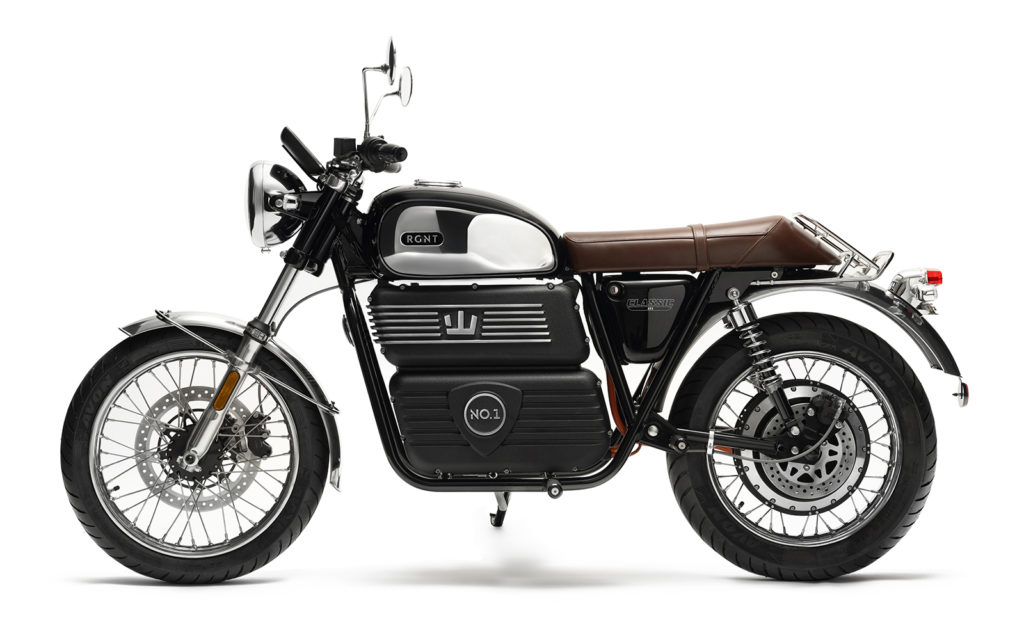
That power figure comes with a significant difference between the two vehicles with a 21kw peak for the electric and 33kw for the BSA’s internal combustion engine. That gives the BSA a power to weight ratio win of 6.5Kg/Kw to the RGNT’s 7.6Kg/Kw. But by the time you factor in the torque figures and the RPM at which they are reached, it’s easy to imagine these two machines being very similar in the race to 100km/h and the electric having a small margin in punching off the corners.
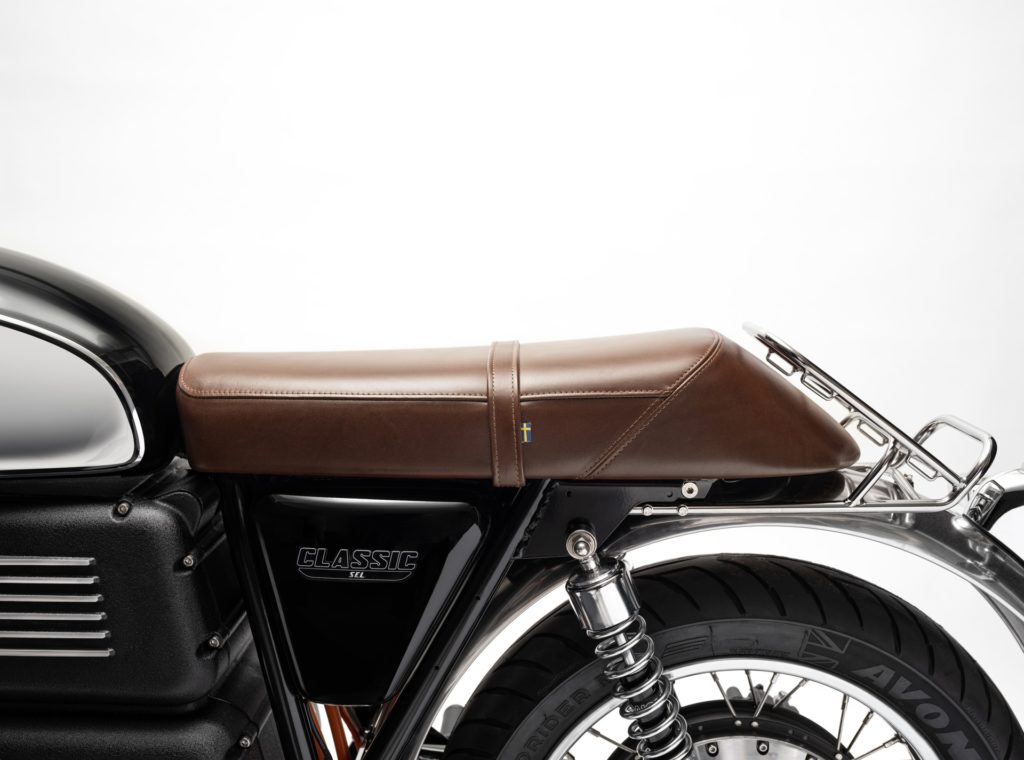
So, it really does come down to price and running costs, the electric won’t need servicing like the BSA, so bear that in mind. But per kilometre traveled based on current fuel and electricity prices in Australia, the BSA will cost you $1 to run per 10km and the electric just half a cent. That’s a huge margin, but then so is the gap in the purchase price, with the BSA coming in much cheaper at approximately US$8,500 to the electrics US$13,500.
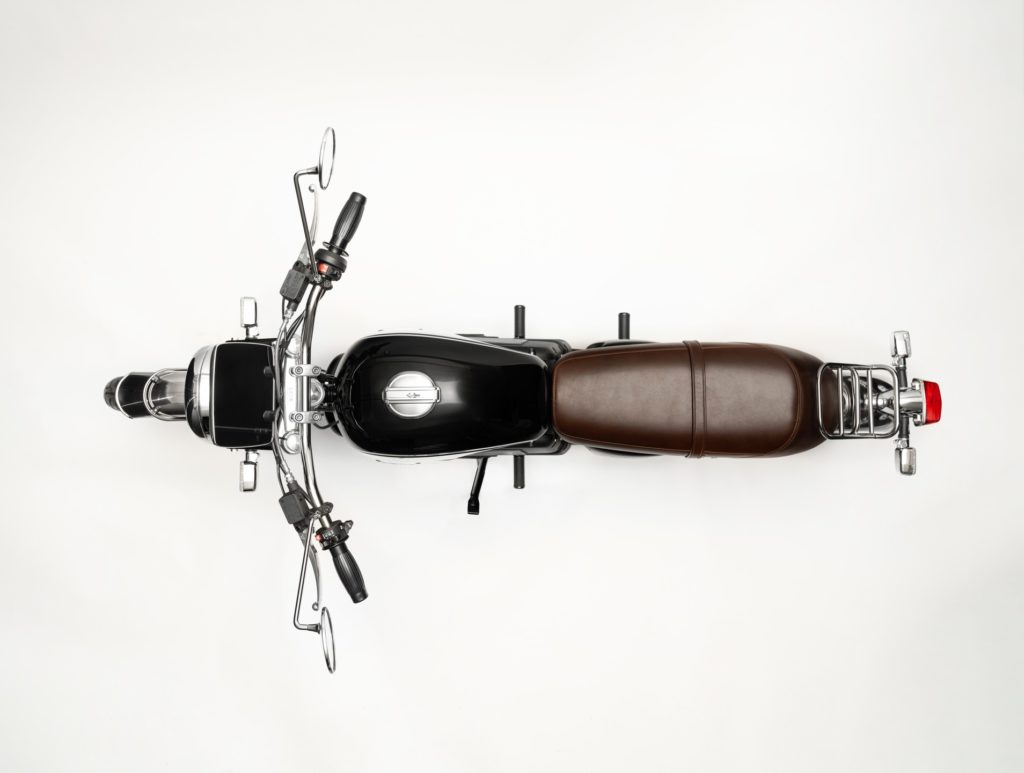
Will you save that amount by not needing to pay the ever-increasing fuel prices, only if you do plenty of miles. But by the time you factor in servicing it works out to be roughly a dead heat in price and performance over the machine’s lifetime. So, it’s really up to you how you want your retro machine powered. For me, it’s still a flip of the coin.
